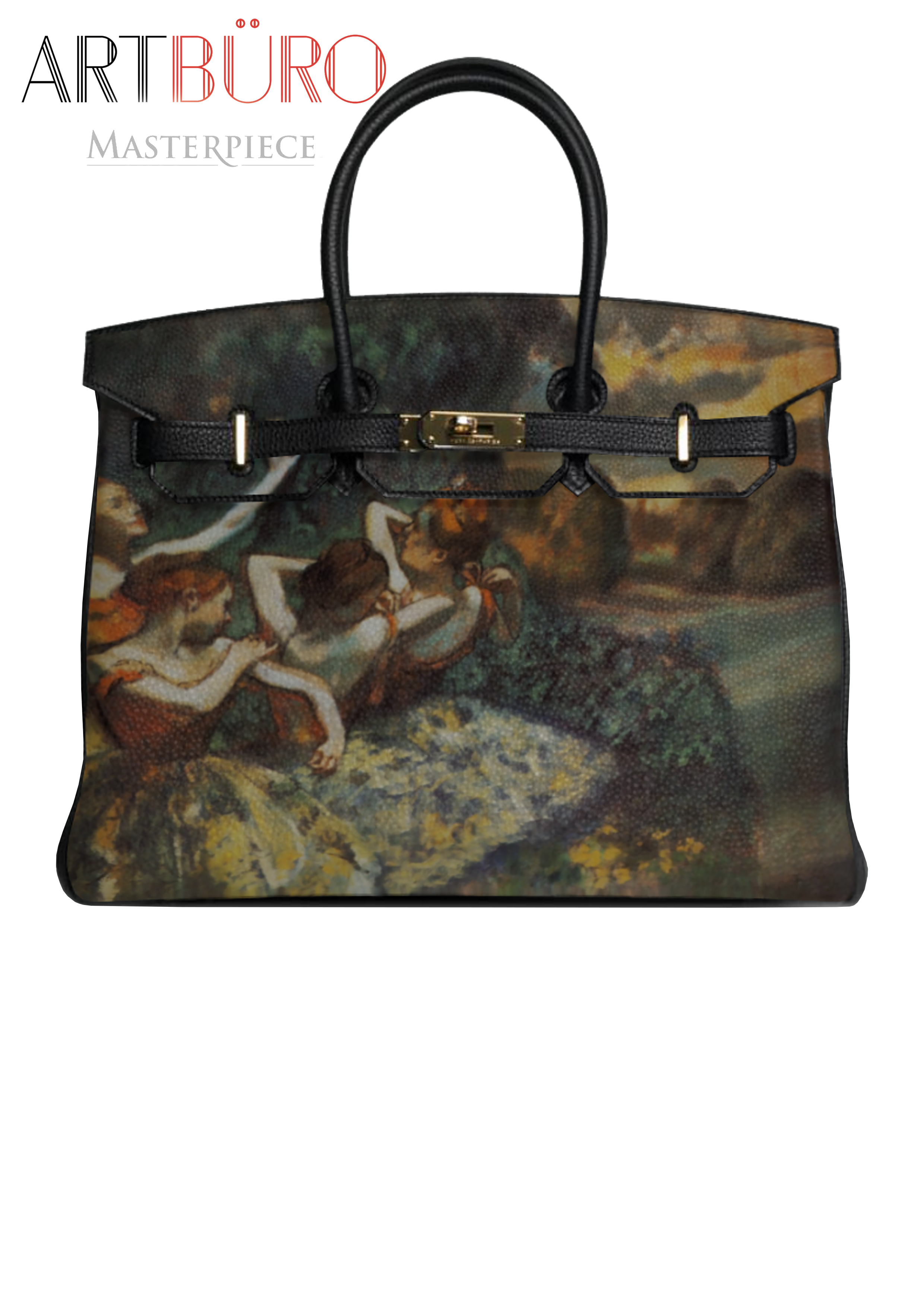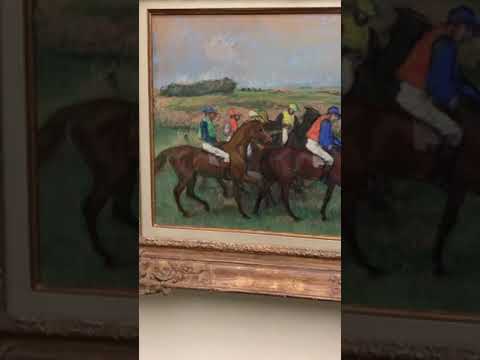Edgar Degas (US: /deɪˈɡɑː/ or UK: /ˈdeɪɡɑː/; born Hilaire-Germain-Edgar De Gas, French: [ilɛːʁ ʒɛʁmɛ̃ ɛdɡaʁ də ɡɑ]; 19 July 1834 – 27 September 1917) was a French artist famous for his paintings, sculptures, prints, and drawings. He is especially identified with the subject of dance; more than half of his works depict dancers. Regarded as one of the founders of Impressionism, he rejected the term, preferring to be called a realist. He was a superb draftsman, and particularly masterly in depicting movement, as can be seen in his rendition of dancers, racecourse subjects and female nudes. His portraits are notable for their psychological complexity and for their portrayal of human isolation.
At the beginning of his career, Degas wanted to be a history painter, a calling for which he was well prepared by his rigorous academic training and close study of classical art. He had spent years absorbing the intricate details and precise techniques that characterized the great masters of the past. From the grand halls of the École des Beaux-Arts to the storied museums of Europe, Degas immersed himself in the canon of historical painting, finding inspiration in the works of artists such as Ingres and Delacroix.
This early phase of his artistic journey was marked by a disciplined approach, rooted deeply in the traditions of the classical art that he so admired. Degas’s dedication to becoming a distinguished history painter reflected his initial aspirations to portray grand, epic narratives on canvas. These were stories from mythology, historical events, and literary classics that required a high level of skill and an intricate understanding of composition, anatomy, and symbolism. His academic phase involved meticulous study of human forms, a thorough understanding of lighting techniques, and the ability to depict complex scenes with clarity and precision. Degas spent countless hours sketching in museums, dissecting masterpieces, and honing his craft with the utmost seriousness. However, as he entered his early thirties, a significant transformation began to occur within Degas’s artistic sensibilities. The world around him was changing rapidly, and so were his inspirations and aspirations. The bustling life of Paris, with its dance halls, theaters, cafes, and bustling streets, beckoned him to shift his focus. By then, the influence of the burgeoning Impressionist movement, with its emphasis on modernity and everyday subjects, had started to make an impact on Degas’s perspective. He found himself increasingly captivated by contemporary scenes and ordinary people caught in candid moments. This shift did not signify a rejection of his classical training; rather, it represented an evolution.
Degas ingeniously applied the rigorous techniques and principles he had mastered as a history painter to the depiction of modern life. Instead of mythological heroes or historical battles, his canvases now featured ballerinas captured in mid-performance, laundresses engrossed in their work, and jockeys poised at the start of a race. His brush brought to life the transient and the ephemeral, the beauty found in the mundane and the grace embedded in the everyday. The accuracy and detail with which he rendered these scenes set Degas apart and earned him acclaim as a classical painter of modern life. His paintings, while contemporary in subject matter, retained the compositional rigor and technical excellence of his academic roots. His ballerinas, for instance, were not merely snapshots of movement; they were studies in the interplay of light and shadow, form and space, balance and dynamism. The classical techniques he employed allowed Degas to imbue these modern subjects with a timeless quality, elevating them to the level of fine art while keeping their inherent spontaneity intact. In this way, Degas forged a unique path that harmonized the grand traditions of the past with the vibrant realities of his present, bridging two worlds and leaving an indelible mark on the art of his time. His legacy stands as a testament to the power of adaptability and the enduring significance of classical training, showing us that great art often arises from the intersection of the old and the new.
“Art is not what you see, but what you make others see.”
― Edgar Degas




Artburo.com specializes in Hermès personalization, allowing clients to create custom Hermès designs, including custom Birkin bags. Each piece is transformed through hand-painted artwork and personalized elements, turning luxury bags into one-of-a-kind items. Artburo offers this customization service at no additional cost for listed products, making high-end personalization more accessible. By blending creativity and craftsmanship, Artburo enhances the exclusivity and individuality of each Hermès bag, delivering a luxury experience tailored to the client’s unique style.
| Concierge Service | Personalization | Online Gallery | About |


